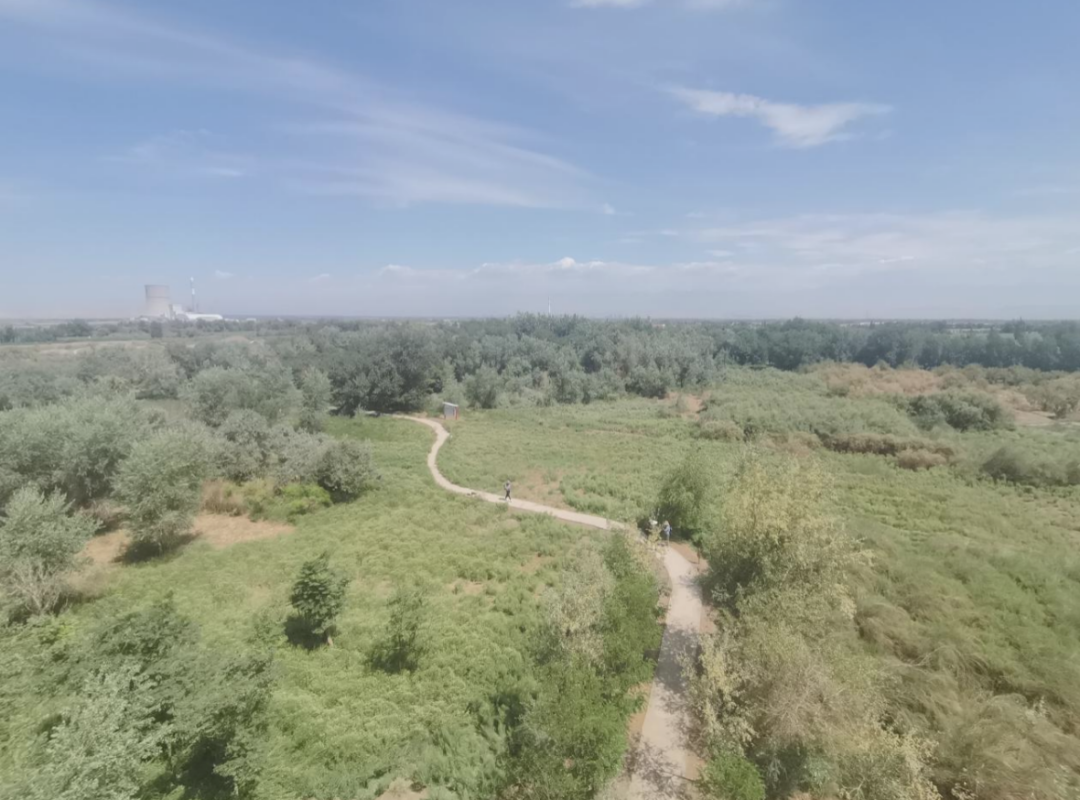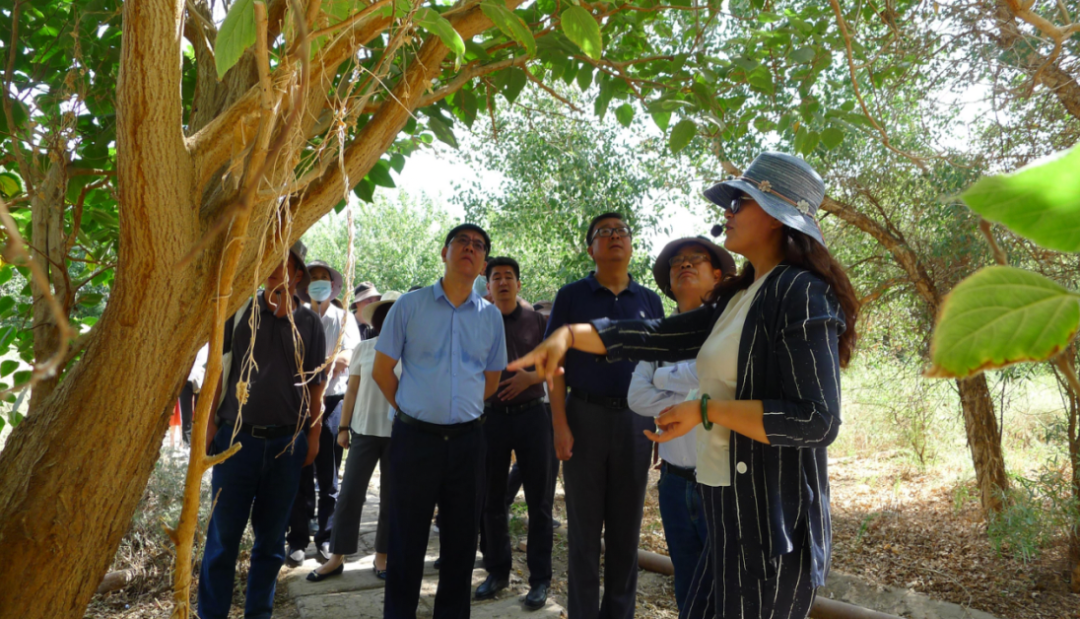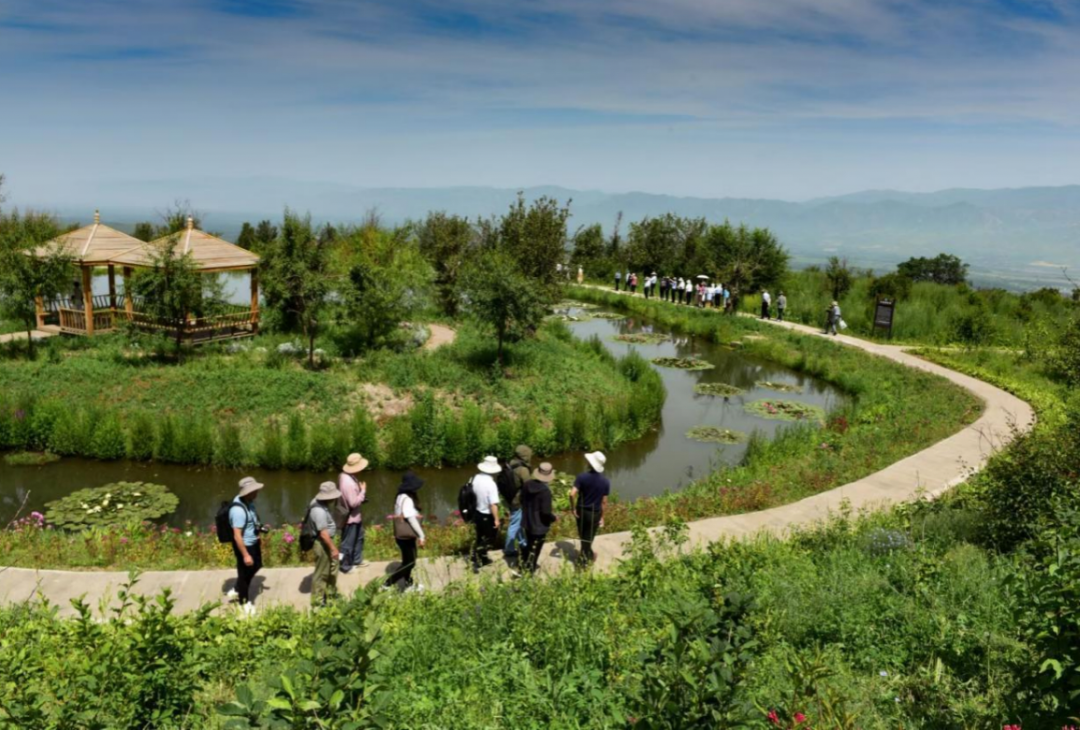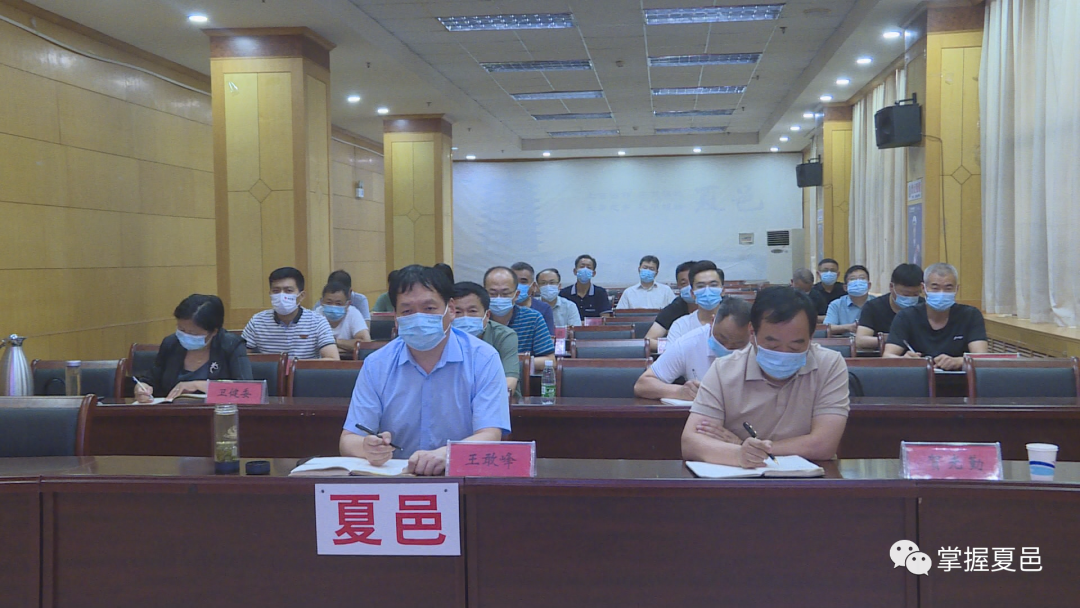Academician Six Academician, the two major botanical gardens in Xinjiang joined hands to fight for the "national level"
Author:Guangming Daily Time:2022.06.24
In the Turpan Desert Botanical Garden, a plant named camel thorns surprised more than 10 domestic botanical gardens.

"You see, the above part of the ground is only twenty or 30 centimeters tall, but the underground root system is 2030 meters long. It is tied into the sand to find water to play a role in windproof and sand." Zhang Yuanming, director of the "Xinjiang Shengjiang Institute of the Chinese Academy of Sciences"), said that a generation of scientists, like camel thorns, deeply rooted in the arid areas of Xinjiang and continued to build two major botanical gardens, which made unique contributions to protecting the ecological environment and biodiversity.
In the past few days, a number of academicians, botanists and botanical gardens gathered in Xinjiang to launch a "joint scientific examination" to the two major botanical gardens -the Turpan Desert Botanical Garden and Yili Botanical Garden. Essence
From wind and sand to people to retreat, the botanical garden has become a "sand control soldiers"
In the midsummer Turpan, the sun is burning. The thermometer shows that the temperature of the sand is close to 70 ° C. In the Turpan Desert Botanical Garden of more than 2,200 acres of Turpan Desert Botanical Gardens, no flowers were raced and tens of thousands of woods. What was seen in is that a desert plant grows stubbornly on the deserted sandy land.
"When I first arrived, the wind and sand were raging, the grass was not born, and the 90,000 acres of wind eroded the flowing sand was forced to retreat." Pan Birong, honorary director of the Turpan Desert Botanical Garden, recalled that in 1972, the local government should be invited to the Xinjiang Biological Soil Research Institute (now Xinjiang The Shengcheng Institute) established the Turpan Red Flag Sand Management Station, which opened the prelude to the construction of the first botanical garden in Xinjiang.
The botanical garden in the desert is difficult to imagine. Turpan, known as "Huozhou", is seriously short of water, with an average annual precipitation of 16.4 mm and evaporation of 3000 mm. The winter is severe in winter, the summer is hot, and the extreme temperature difference is close to 100 ° C. There are very few plants that can survive. Coupled with the main wind line, the wind speed is as high as 40 meters per second. After a strong wind, the roof of the botanical garden was opened, 11 cement electric poles were blown off, and the seedlings were planted by the power of nine cows and two tigers. It was also blown without a trace.
But sciences persist. They rushed to the dry sandy areas in China and Central Asia, introducing wind -proof sand and drought -resistant trees, irrigation, and herbal plants, and repeated seedlings and planting tests. The breakthrough progress is to find a Liao Ke plant called "Sand Tujube". It takes the initiative to take off the leaves into the "fake death" state when lacking water. "Star Plants" for sand control. Later, they successively discovered and cultivated plants such as Liu Liu and shuttle, and built more than 2,000 acres of protective forest belts, making "people enter the sand and retreat" into reality.
Over the past 50 years, the four generations of Turpan Botanical Parks have continued to struggle. There are more than 800 species of planting plants, and more than 700 desert plants have successfully domesticated, accounting for about 60%of my country's desert seeds. Right now, there are more than 500 desert plants in the botanical garden, of which nearly 150 kinds of desert rare and endangered plant.
"Along the world's longest desert highway -the Taklama Ganan Desert Highway, all of them are the anti -inverse 'star plants' selected by the Turpan Desert Botanical Garden, covering 436 kilometers throughout the line." Zhang Daoyuan's tone revealed pride.

Since its establishment, the Turpan Desert Botanical Garden has accumulated a total of more than millions of desert plant seedlings for Xinjiang's "Sanbei" protective forest project, sand prevention and sand control project, retreating farmland, and desert road protection forest project. The afforestation area exceeds 8,000 acres, which has made outstanding contributions to the prevention and control of desertification and the development of the sand industry. In recent years, the plants and scientific research results cultivated by the garden have gone abroad and provided "Chinese experience" for desertification governance in Central Asia and Africa.
Two botanical gardens, one east, one west, jointly fight for "national"
On the morning of June 23, in Alma Town, Xinyuan County, Yili Prefecture, the joint scientific and technical staff and the leaders of the Xinjiang Uygur Autonomous Region Science and Technology Department, Lincao Bureau, Science and Technology Association, and Yili Prefecture jointly witnessed the opening of the Ili Botanical Garden. This botanical garden at the western end of the motherland will be officially opened to the public from now on.
The construction of Yili Botanical Garden was launched in 2012. It is currently open to the core area of 3,000 acres, including the wild fruit tree local conservation area, wild fruit tree relocation conservation area, ornamental flower garden, pharmaceutical botanical garden, fruit tree seed quality resource garden, etc. Special parks have introduced thousands of wild species resources. In particular, the completion of the botanical garden allowed the wild apple, wild apricot, and wild walnuts of the Yili River Valley to be protected by rescue.

Guan Kaiyun, director of Yili Botanical Garden, introduced the construction idea of "Yili -Turpan National Botanical Garden".
Guan Kaiyun said that Xinjiang has my country's largest desert areas and unique biological species and resources, which have been listed as a key area for biological diversity conservation by the United Nations Conference of the United Nations Biological Diversity Convention. Establishing a national botanical garden based on Xinjiang, facing Central Asia, and radiating global arid areas is of great significance to ensure the safety and green development of biological resources in the arid areas.
According to the concept, this national botanical garden will rely on the construction of the two botanical gardens of the Xinjiang Institute of Xinjiang Shengcheng, the Chinese Academy of Sciences. "One West" refers to the Yili Botanical Garden. The Yili River Valley where the garden is located is identified as "one of the 11 key areas of global biodiversity in China". A large number of unique species, precious categories, and relics can create the "World Fruit Basketball Gene Library"; "One East" refers to the Turpan Desert Botanical Garden. Provide good conditions to strive to build a "desert plant and biological sand fixing base". Academicians and colleagues have made suggestions to "diagnose the pulse" for Xinjiang Botanical Garden
On the afternoon of June 22, at the "Yili -Turpan National Botanical Garden" construction ideological expert consultation meeting, six academicians actively made suggestions and suggestions through online and offline.
"Xinjiang should have a national botanical garden." Academician Hong Deyuan said that Xinjiang's special geographical location and fragile ecological environment determine the special and precious of its plant resources. Scientific research, development and utilization.

Academician Xu Zhihong, who has visited the Turpan Desert Botanical Garden and Yili Botanical Garden, said that these two botanical gardens are very prominent, and they have played a positive role in protecting the ecological environment and maintenance of biological diversity in Xinjiang. A "window" for the biological diversity of the arid areas to Central Asia.
Academician Kangle suggested that modern information technology should be adopted to further connect the two botanical gardens of Yili and Turpan; Academician Wei Fuwen suggested that in the construction, it should highlight the characteristics of Xinjiang regional and distinguish it with the urban botanical garden; The connection between the botanical garden and the place of livelihood uses high -level scientific research to provide support for the development of botanical gardens; Academician Xie Huaan said that the protection of wild germplasm resources should be highlighted during the construction process.
Ren Hai, director of the South China Botanical Garden of the Chinese Academy of Sciences, combined with work practice suggestions that in accordance with the goals of "government satisfaction, scientists satisfaction, and people's satisfaction", to strive for local party committees and government support, improve the level in terms of forming talent teams, promoting infrastructure construction, and scientific research on scientific research. , Promote the construction of the national botanical garden.
The reporter learned that earlier this month, the State Council approved the establishment of a South China National Botanical Garden. This is the second botanical garden after Beijing National Botanical Garden. The State Forest Cao Bureau will steadily promote the construction of the national botanical garden system in accordance with the principle of "a mature one".
(Guangming Daily All Media Reporter Shang Jie Li Hui)
Source: Guangming Daily All Media Reporter Shang Jie Li Hui
Responsible editor: Zhang Yongqun
Edit: Wu Yaqi Chang Ying Wang Yuan
- END -
Don't accept it!Here are "martial arts masters"!

West Railway InformationThe official account of China Railway Xi'an Bureau Group ...
Our county organizations listen to watch the province's economic operation and key project cons

On June 12, the province's economic operation and key project construction video d...